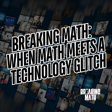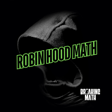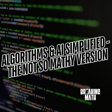
Black Holes: The Abyss Part 2
Happy Summer! We have another week of our summer break after this episode from 2018. We will be back shortly with more content and surprises!
Black holes are objects that seem exotic to us because they have properties that boggle our comparatively mild-mannered minds. These are objects that light cannot escape from, yet glow with the energy they have captured until they evaporate out all of their mass. They thus have temperature, but Einstein's general theory of relativity predicts a paradoxically smooth form. And perhaps most mind-boggling of all, it seems at first glance that they have the ability to erase information. So what is black hole thermodynamics? How does it interact with the fabric of space? And what are virtual particles?
Keywords: Black holes, gravity, universe, physics, ai, machine learning, education, statistics, engineering, humanity
Subscribe to Breaking Math wherever you get your podcasts.
Become a patron of Breaking Math for as little as a buck a month
Follow Breaking Math on Twitter, Instagram, LinkedIn, Website, YouTube, TikTok
Follow Autumn on Twitter and Instagram
Follow Gabe on Twitter.
Become a guest here
email: breakingmathpodcast@gmail.com



















